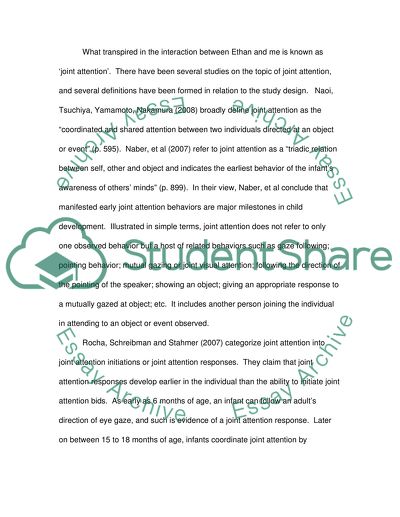Cite this document
(“Joint Attention Essay Example | Topics and Well Written Essays - 3000 words”, n.d.)
Retrieved from https://studentshare.org/miscellaneous/1559472-joint-attention
Retrieved from https://studentshare.org/miscellaneous/1559472-joint-attention
(Joint Attention Essay Example | Topics and Well Written Essays - 3000 Words)
https://studentshare.org/miscellaneous/1559472-joint-attention.
https://studentshare.org/miscellaneous/1559472-joint-attention.
“Joint Attention Essay Example | Topics and Well Written Essays - 3000 Words”, n.d. https://studentshare.org/miscellaneous/1559472-joint-attention.


